Photo: CD Davis
Pairing a compact camper with a 4WD truck is a capable and nimble approach to comfortable overland travel. But not every truck camper is created equal. Slide-in campers have some advantages, like simple installation, but they sacrifice space due to their integration with existing truck beds, and many are not really designed to endure serious off-road abuse. And while flatbed campers make much better use of the truck chassis in regards to space, most come with high price tags, are heavy, and can lack the durability demanded by the overlanding community. But that’s where the Bison Overland’s Space Wrangler flatbed truck camper shines.
Built by hand in Tulsa, Oklahoma, the Space Wrangler is a flatbed truck camper that’s made for extended travel and strikes an excellent balance between durability, weight, function, and price. Its designers, Drew and Cody, set out to create a more budget-friendly flatbed camper, simultaneously fulfilling their own needs while filling a gap in the flatbed truck camper market. Apparently, other travelers wanted the same thing, and since completing their first camper, Drew and Cody have seen a swell of interest.
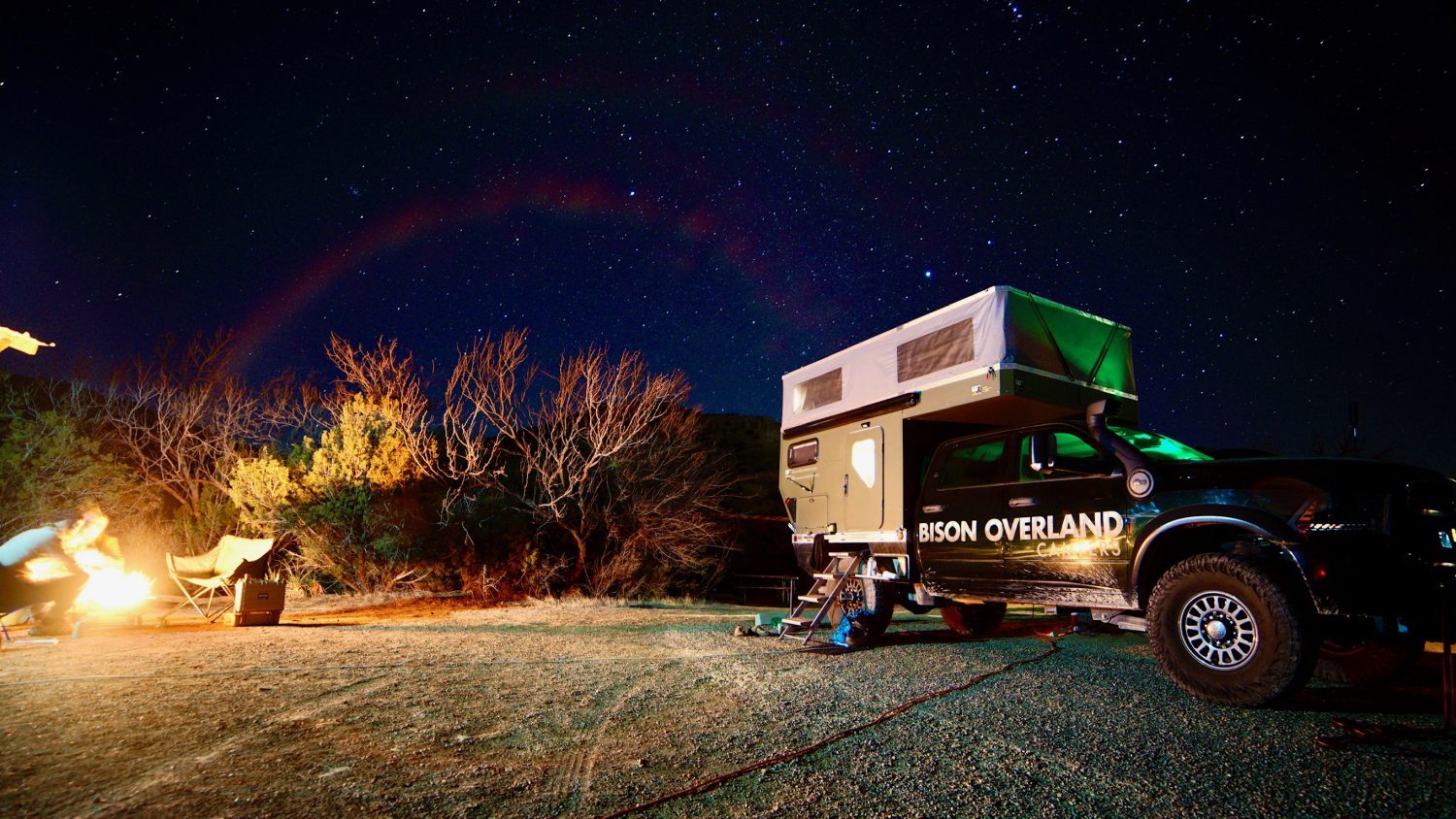
The Bison Overland Space Wrangler at a Glance
Flatbed campers aren’t a new development, but Bison Overland has managed to develop a shell that they build by hand in the US with durable materials and a budget-friendly price point, starting in the low $20,000’s. This may sound high, but it is significantly less than anything else currently available in the flatbed category (except for maybe an All Terrain Campers flatbed shell).
The Space Wrangler shell comes standards with the following features:
-
- Tern Overland door and windows
- One Maxxair fan
- 1/16-inch 6061 aluminum skin exterior (with choice of powder-coated color options)
- Fully-finished UV-treated interior hardwood walls
- Recessed interior and exterior LED lighting
- 12-volt power supply at each sidewall as well as in the cabover
- Blue Sea Fuse panel (ready for a battery, and solar pre-wired to the pop-up roof)
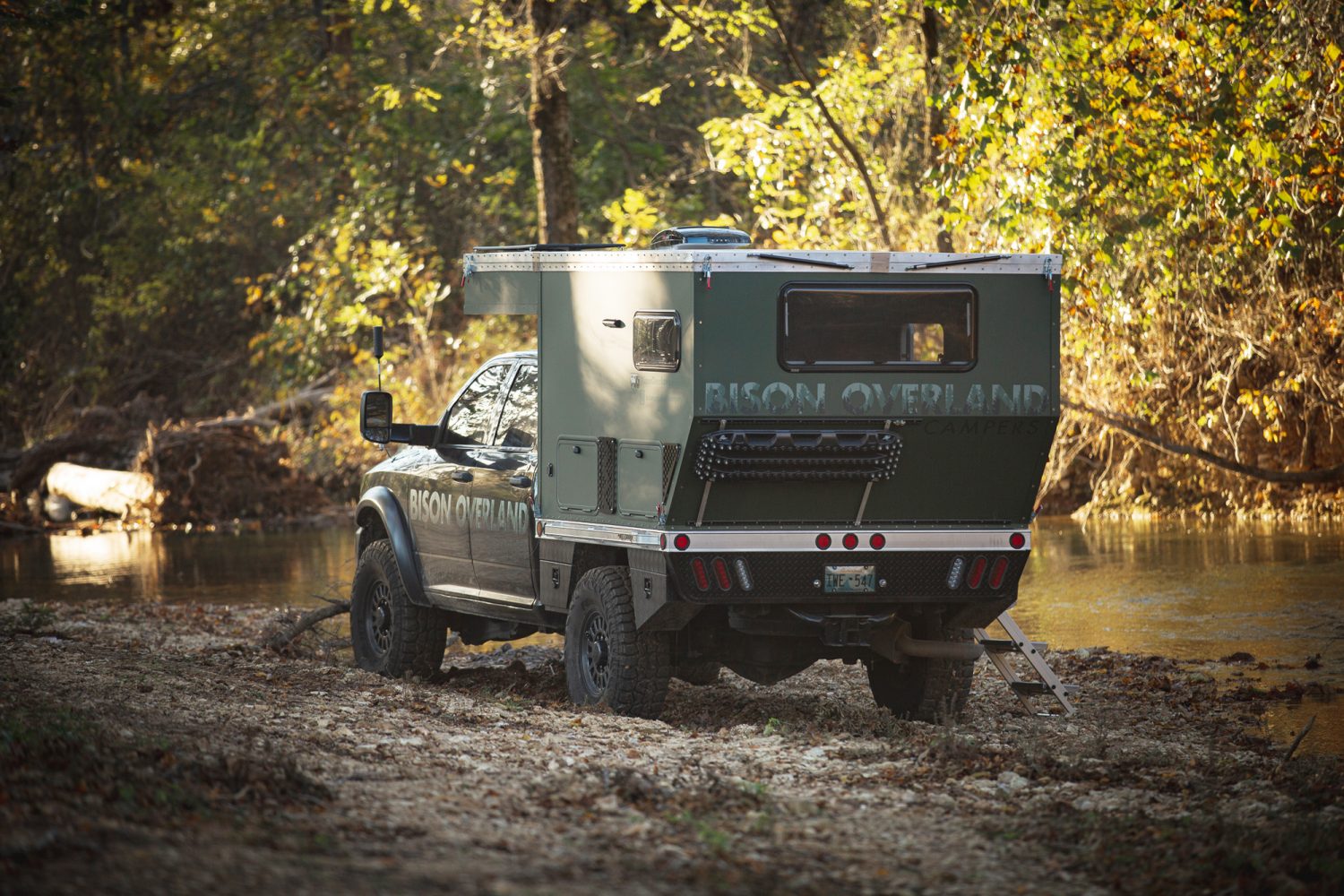
Photo: CD Davis
Space Wrangler’s Stand-out Features
The Bison Overland Space Wrangler has a handful of qualities that are worth pointing out, starting with its single-piece composite roof panel which is strong enough to support the weight of two people in the secured (not extended) position. The camper has a light yet strong, welded 1/8-inch aluminum frame and 1/16-inch-thick aluminum skin which is robust enough to shrug off contact from branches on the trail.
For customers looking to add a few options, Bison offers the following upgrades:
-
- RedArc/Zamp power management package
- Dakota lithium house batteries
- Tern Overland roof hatch and/or cargo hatches
- Dometic awning
- Camper jacks
- Upholstered interior walls
- Additional vent fans
Additionally, they have plans to offer a thicker pop-top canvas with an insulated option for extended cold-weather comfort. Even with the above-mentioned optional upgrades, the short-bed Space Wrangler flatbed camper weighs in under 1,200 pounds.
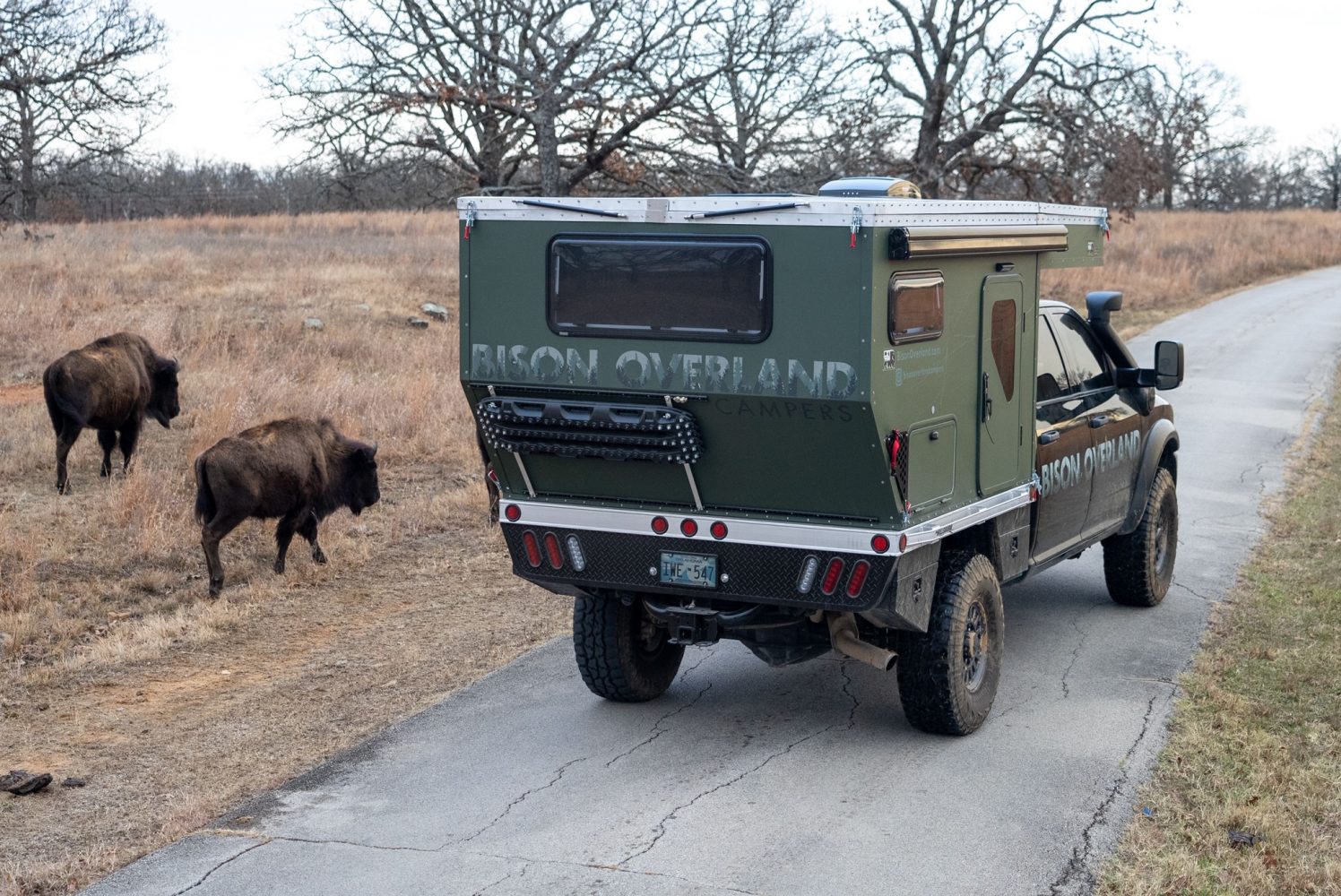
Photo: Jorge Gonzalez
What’s next for Bison Overland?
I recently asked Drew how Bison got its start, especially during a global pandemic.
“I’ve been into camping my whole life,” he said, “and I’ve owned pull-behind pop-ups, bumper-pull campers, as well as older Class-C and Class-A campers. I also have an offroad fabrication background and previously worked for a company that did everything from simple install jobs, to building tube chassis rigs for rock crawling and racing. About three to four years ago, I got into pop-up truck campers and quickly found myself obsessed with FWC (Four Wheel Campers). I quickly found a way to buy an old ’90s Eagle to put on my First Gen Tacoma. I then found an early 00s Hawk to swap to. Naturally, that led to saving up some money and ordering a new Hawk shell slide-in from RMFWC. I loved it; it was amazing. I was proud to be a FWC owner. Over the course of a year, I realized a Flatbed was what I wanted but I couldn’t afford a FWC flatbed. I grew tired of climbing in and out over and over to grab gear, food, and beer from inside the camper. I brainstormed a few ideas to access storage, but nothing that worked well with the Hawk Slide in.”
Eventually, Drew decided to try his hand at designing exactly what he wanted. He reflected on the endeavor.
“It was a great project and a lot of fun. I had zero intentions for [the first camper] to be any sort of “test” for [the viability] of a new camper company. People think that was the plan all along, but the intent was for this converted camper to be our family [rig] and nothing else. However, when my good friend came by for a beer and to see the camper, we got to talking about what’s lacking on the market and how someone needs to build a flatbed shell model with better materials. COVID was just beginning, and at the time, we were both commercial insurance brokers with free time (our offices were closed). We decided to build one and see how it went. Before it was done, the interest was growing, and it has not stopped since then.”
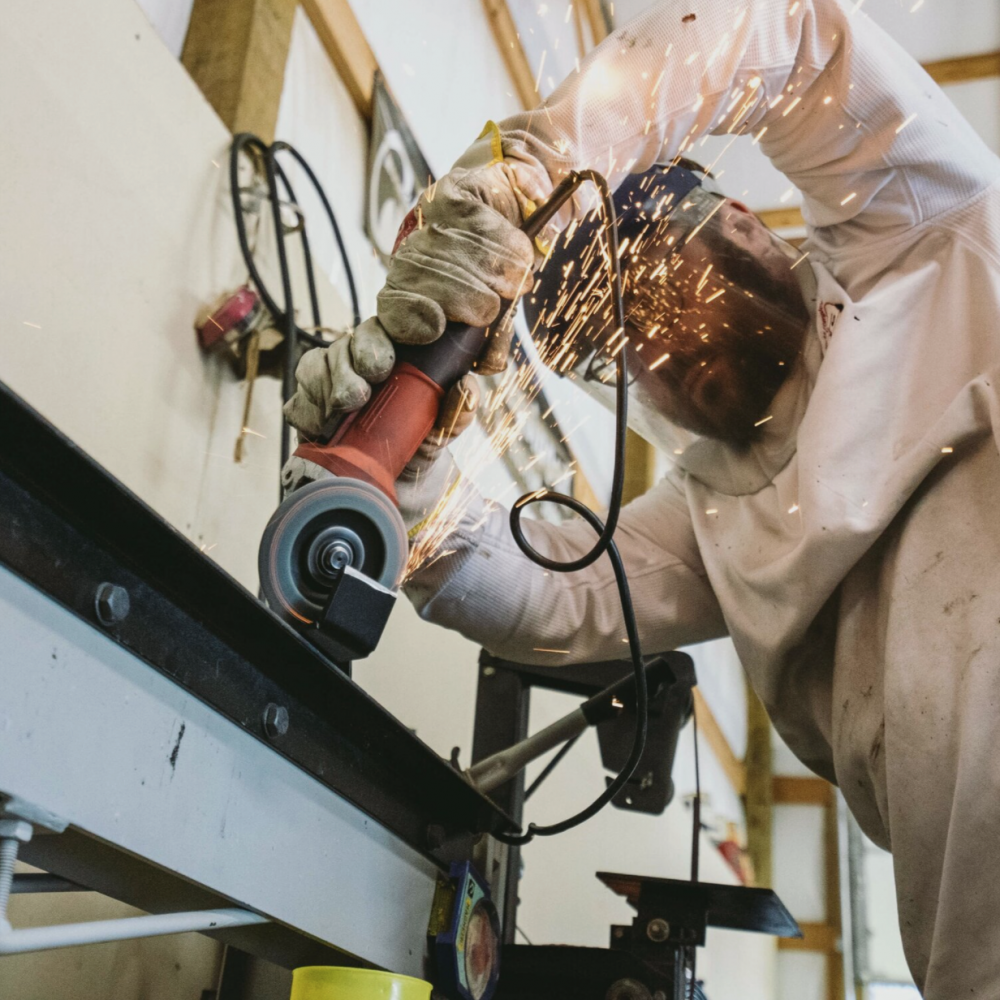
With the Space Wrangler as their first model, and plans already set in place to expand into a larger facility where they can ramp up production, Drew and Cody have some exciting ambitions. They are currently developing a mid-sized camper which they are building with 2-inch-thick R-10 rated US-made composite panels. They suspect that the finished shell will weigh in somewhere around 800 pounds. They plant to install their initial mid-sized concept camper on a third-generation Tacoma long-bed chassis. In addition to the mid-sized offering, they have plans to build a full-sized all-composite camper as well.
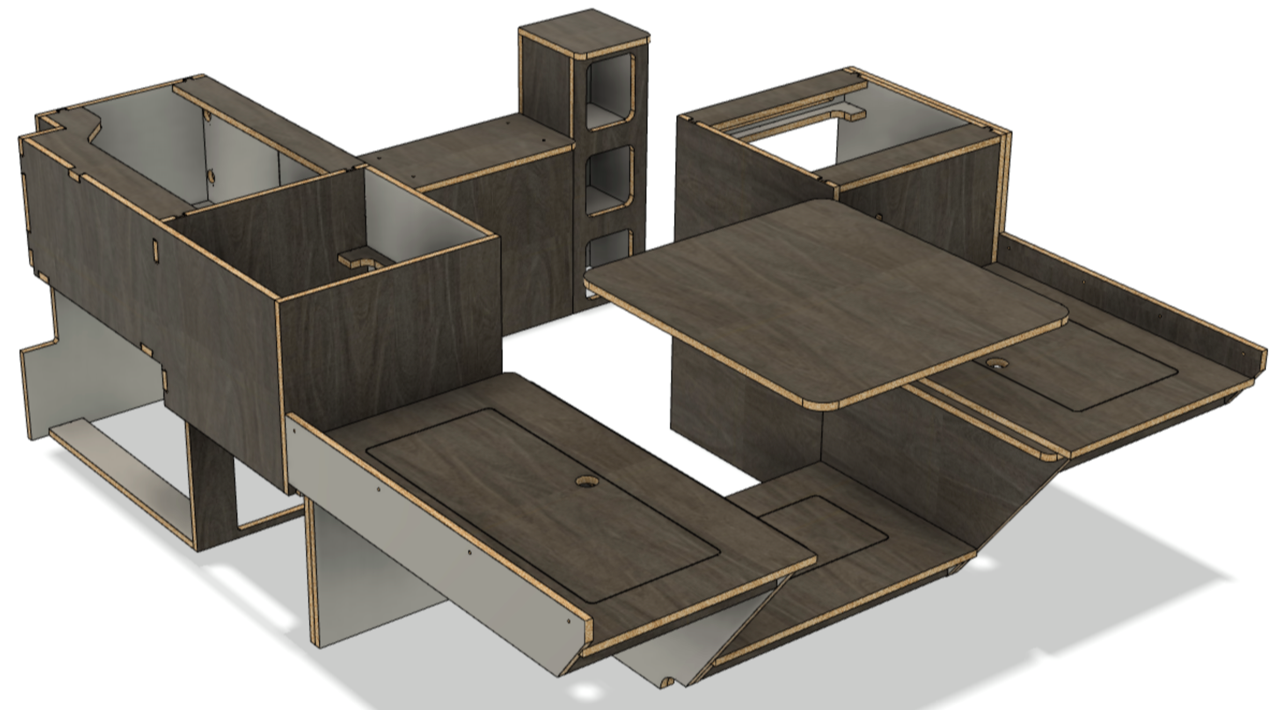

Also coming down the pipeline for Bison is a fully CNC-cut interior for the Space Wrangler shell. They anticipate pricing to start somewhere around $4,000 for this option. Of course, for those of you who are handy and want to design your own interior, the Space Wrangler shell is a solid starting point.
Learn more about the Bison Campers Space Wrangler here.


